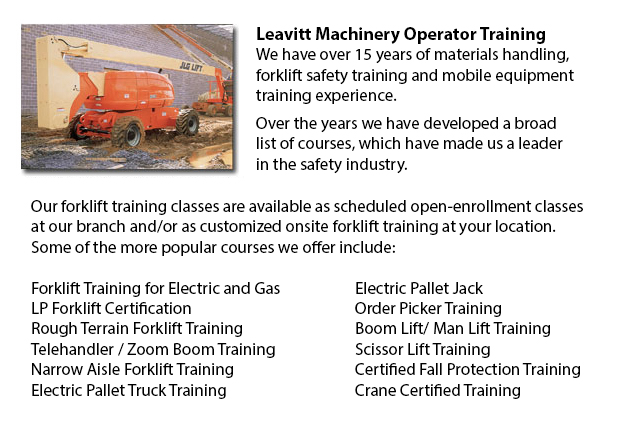
London Boom Lift Safey Training - Boom lifts are a type of elevated work platform or aerial lifting device that are commonly utilized in construction, industry, and warehousing. Boom lifts can be used in practically any surroundings due to their versatility.
The elevated work platform is used in order to enable access to heights which were otherwise not reachable utilizing other methods. There are dangers inherent when utilizing a boom lift device. Employees who operate them have to be trained in the right operating procedures. Avoiding accidents is vital.
Boom Lift Training Programs include the safety factors involved in boom lift operation. The program is suitable for people who operate self-propelled boom supported elevated work platforms and self-propelled elevated work platforms. Upon successfully completing the course, participants would be issued a certificate by somebody qualified to confirm completing a hands-on evaluation.
Industry agencies, local and federal regulators, and lift manufacturers all play a part in establishing standards and providing information so as to help train operators in the safe utilization of elevated work platforms. The most important ways in preventing accidents related to the use of elevated work platforms are the following: conducting site assessments; checking machines; and having on safety gear.
Important safety considerations when operating Boom lifts:
Operators have to observe the minimum safe approach distance (or also called MSAD) from power lines. Voltage can arc across the air to be able to find an easy path to ground.
A telescopic boom must be retracted prior to lowering a work platform to be able to maintain stability as the platform nears the ground.
Boom lift workers must tie off to ensure their safety. The harness and lanyard tools have to be attached to manufacturer provided anchorage, and never to other poles or wires. Tying off may or may not be required in scissor lifts, which depends on particular local regulations, employer guidelines or job risks.
The maximum slope will be specified by the manufacturer. Workers must avoid working on a slope, whenever possible. When the slope exceeds recommended conditions, the lifting device must be transported or winched over the slope. A grade can be simply measured by laying a minimum 3-feet long straight edge or board on the slope. Next a carpenter's level could be laid on the straight edge and the end raised until it is level. The per-cent slope is attained by measuring the distance to the ground (the rise) and then dividing the rise by the length of the straight edge. Next multiply by one hundred.
-
London Crane License
London Crane License - Crane operators ought to be "credentialed", that means they must possess a crane operator license or certification. Credentialing is considered a mandatory governmental requirement in order to practice as a crane operator. Obta... More -
London Heavy Equipment Operator Training
London Heavy Equipment Operator Training - Training facilities which offer quality standards in the industry and not just provide field performing tasks but added equipment training are highly sought after. Accredited schools provide students the kno... More -
Telehandler Training in London
Telescopic handlers usually referred to as telehandlers for short, are a very popular piece of heavy construction machinery. They are usually utilized in the agriculture and construction industries. These machines have maximum reaching capacity and c... More -
London Boom Lift Certification
London Boom Lift Certification - Elevated work platforms allow maintenance operations and work to be carried out at heights which could not be reached by any other means. Workers utilizing boom lifts and scissor lifts can learn how to safely operate... More -
London Fall Protection Ticket
London Fall Protection Ticket - Fall-related accidents are the number one reason of death within the construction industry. The potential for fall incidents really increases based upon the kind of work that is being completed within your workplace. T... More -
London Forklift Safety Training
London Forklift Safety Training - Anybody who wants to operate a lift truck should take a forklift safety training program to become a certified forklift truck operator. There are several ways to obtain forklift training. Programs are provided throug... More -
Operator Safety Training, Re-Qualification Training, In-House Instructor Training in London
Lift trucks are used in nearly all warehouse operations and in boat yards and in industrial construction sites. The reach feature of a forklift is a vital component used in various applications like for instance whenever a shelving system is being us... More -
London Aerial Boom Lift Training
London Aerial Boom Lift Training - Aerial Boom Lift Training is required for any person who operates, supervises or works near boom lifts. This particular type of aerial lift or aerial work platform is used for lifting individuals, materials and tool... More

Forklift Certification London
TOLL FREE: 1-888-254-6157
London, Ontario
forkliftcertificationlondon.com
Email Us
About Us


